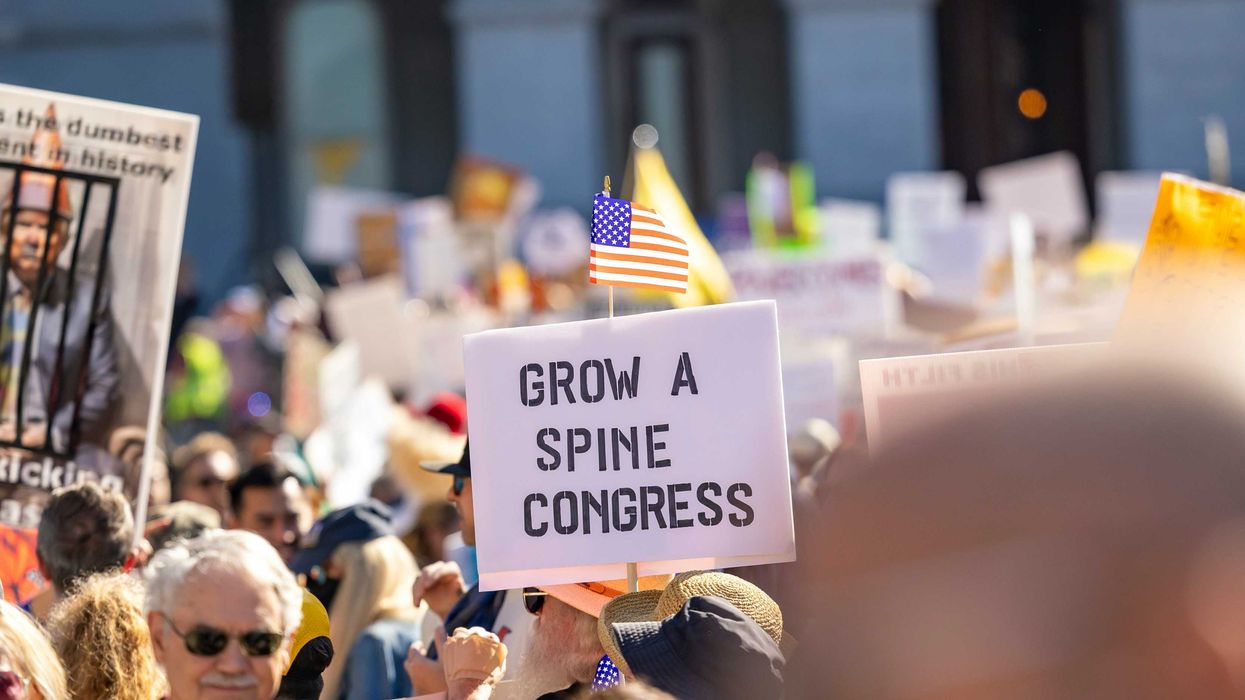Mesirow is the founder of the Elected Leaders Collective.
Being an elected official today takes an extraordinary level of courage. And it’s taking a toll on the mental health of our elected officials. A small cadre of brave people, part of a project called the Elected Leaders Collective, is supporting leaders in doing their work in a healthier way, bringing tools of mental wellbeing to the arena. Too many heart-led elected officials are dropping out when we need them to stay in and change the system. With new tools of personal inquiry, transformation and empowerment, we can make it happen.
Let me share how I found this calling. I was bright-eyed and energetic, with a keen intellect and servant’s soul. Passion oozed from my core. A voracious reader, I consumed endless books on policy, learned every theory and studied the greats. I learned in the field, volunteered for campaigns and causes, became a state delegate, and took leadership seminars. I did all the external work that was expected of me. I applied these talents by running a statewide race at just 23 years old. I was idealistic and thought I would change the world.
Then reality struck. Someone tried to sell a Senate seat: moral decay. Social media screamed at me: public hate. Entrenched interests in my own party slowed progress: nihilism. A can’t-do attitude pervaded: apathy. Ward bosses operated like mob bosses: a toxic culture. Privately I battled my own demons, as years of childhood trauma ran the programming deep in my brain. I pointed my finger at others, blaming them for the world’s failings. I numbed the pain with workaholism, food, alcohol and drugs.
The liquid of ecstatic possibility turned to cement structures that would not change.
Though I did not know it at the time, I could not hold the toxicity inside me and that in the system. I dropped out and took with me my passion, zeal and force for change. All the books had been for nothing. The light at the end of the tunnel of democracy dimmed.
For the next eight years, I worked on healing, conquering addiction, and reforming my relationship with food, alcohol, work, and sleep. I looked inward, understanding the lessons my traumas were here to teach me. Like an archeologist, I uncovered my life’s purpose and operationalized structures, boundaries and a community to support it. This was the start of my internal work, work that I knew never ends. Having been elected as a city councilperson at 32 years young, I could apply my internal and external learning to giving back to my community.
Then reality came again. Hate poured in on social media; I listened to understand. The newspaper traded in misinformation; I spoke the truth and cultivated personal advice. People confronted me at the farmer's market; I met them with kindness. Colleagues' sought incrementalism, and I trusted in our collective wisdom and supported them. Working two jobs, I experienced stress and became overwhelmed, meeting people with curiosity, cultivating mindfulness. I experienced all this, taking radical responsibility and asking, “What can I do to alleviate the condition I claim not to want?”
The cement began to liquefy and possibilities opened.
During Covid I committed my life to "healing our politics." I founded the Elected Leaders Collective. We help heart-centered leaders of all kinds find their own, personal transformation. Working with a community of over 100 elected leaders across the country we co-create safe, sacred, confidential space for mission-driven public-sector leaders.
Everyone needs a community to support them, so we built “The Pride,” our signature peer cohort group coaching program. We provide courses, workshops, coaching and small-group work to help leaders remove our internal blocks, build resilience, and get out of our own way, as I had to learn over all those years in the wilderness.
Our politics is toxic, and it need not be. We can change our collective condition by changing our individual conditions. It takes all of us. And it works.
Myriad scientific studies confirm the efficacy of mindfulness, mindset work, and other methodologies we employ. Consider Google’s Search Inside Yourself corporate wellness project, which found that applying techniques of workplace mindfulness reduced the experience of burnout by 30 percent and increased resilience and “bounce back” by 42 percent. In this same research, acts of constructive empathy rose by 39 percent, co-worker compassion grew by 22 percent and, as a result, finding “workable solutions to difficult problems” improved by 22 percent. Imagine what we could accomplish in the public trust with 22 percent more solutions to difficult problems and feeling 39 percent more empathy from our co-workers. I want to live in that world.
As a result of doing the work, elected leaders and public servants’ lives are improving.
During the great resignation, we aren't dropping out, we are dropping in. We are experiencing a decline in stress and anxiety. Our feeling of connectedness and trust is increasing. We are becoming more effective. We are healing our politics by healing ourselves. It has happened to me. My days of stress per year are down from over 300 to under 30, my anxiety is down 70 percent in two and a half years, and our community is passing transformational legislation, deferred for nearly a generation.
This is the beginning. We welcome all heart-centered leaders. We are building something new, together. Diversity of all kinds, including thought, is celebrated, and you are welcome.



















